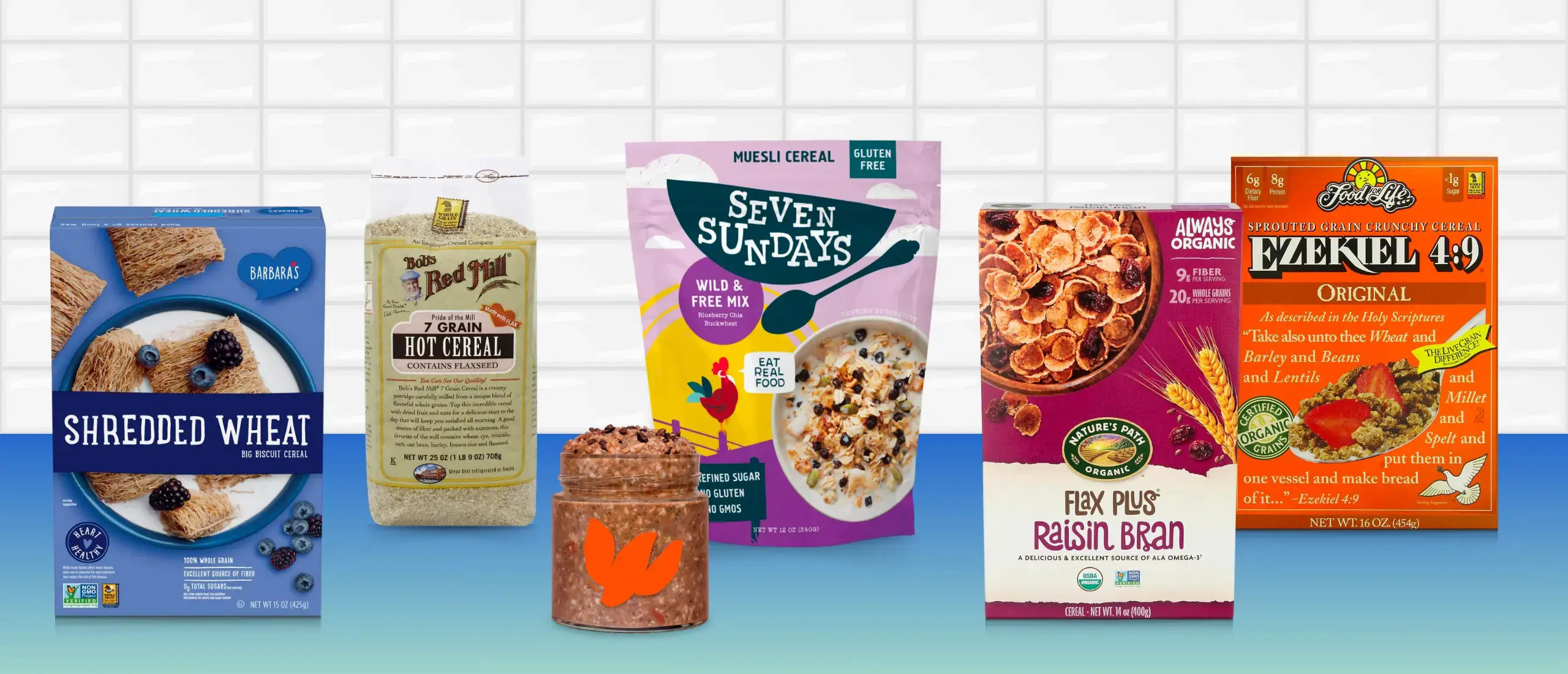The Healthiest High-Fiber Cereal, According to a Registered Dietitian
- By Matthew Kadey, M.S., R.D.
- December 28, 2023
If you’re one of the nearly 300 million Americans that start their day with a bowl of cereal (1), you might be sitting on an easy opportunity to upgrade your health: High-fiber cereal.
Cereal is typically loaded with sugar and refined grains—a blood sugar spike (and crash) waiting to happen. Choosing a high-fiber option helps to slow down digestion and balance blood sugar levels, keeping you energized and satisfied for hours. Dietary fiber also feeds the beneficial bacteria in your gut, making your gut microbiome more robust, and improving digestive, immune, and brain health in the process (2).
Eating more fiber might help you live longer, too. Total fiber intake, including cereal fiber, has been associated with reduced inflammation and risk of cardiovascular disease (3). A 2023 review published in Clinical Nutrition found that dietary fiber from both whole grains and cereal was associated with a reduced risk of all-cause mortality (4).
If a fiber/cereal mashup is giving you visions of cardboard, hear us out. The cereal aisle is stocked with a range of high-fiber options that taste great (swear), and cater to specific dietary needs like gluten-free or allergy-free. The best high-fiber cereals you can buy, and everything else you should know, below.
What is High-Fiber Cereal?
Tons of cereal brands market their cereal as a good source of fiber. But to be considered high fiber, a bowl of cereal should provide at least six grams of fiber, which is around 20 percent of the Daily Value (DV) for fiber (5).
Is All High-Fiber Cereal Healthy?
Not necessarily. A serving of Kashi Go Honey Almond Flax Crunch has 8 grams of fiber, but it also contains 10 grams of added sugar. High sugar intake is linked to chronic health conditions like cardiovascular disease and obesity (6, 7). The American Heart Association recommends men consume no more than 38 grams of sugar per day (8). Aim to stay under 6 to 7 grams of added sugar per serving of cereal.
The first ingredient of a high-fiber cereal should be 100 percent whole grain like whole wheat or oats, not sugar or enriched flour. Scan the ingredient list for things like modified food starch and other questionable additives you may not want floating in your milk every morning.
Some forms of fiber may also be more ideal than others. Isolated fibers like inulin, corn bran, or chicory root may not be as ideal as the intact fiber that occurs naturally in whole grains and seeds. A cereal with whole grain fiber (like whole wheat or rolled oats) ensures you’re getting the antioxidants, vitamins, and minerals from the whole food in addition to the fiber.
The Healthiest High-Fiber Cereals
The high-fiber cereals on this list check the boxes for fiber, flavor, texture, and more without going overboard on sugar and other additives.
References
1. Statista Research Department (2023). Consumption of Breakfast Cereals (Cold) in the U.S. 2011-2024.
2. Zhang, P. et al. (2022). Influence of Foods and Nutrition on the Gut Microbiome and Implications for Intestinal Health.
3. Shivakoti, R. et al. (2022). Intake and Sources of Dietary Fiber, Inflammation, and Cardiovascular Disease in Older US Adults.
4. Ramezani, F. et al. (2024). Dietary Fiber Intake and All-Cause and Cause-Specific Mortality: An Updated Systematic Review and Meta-Analysis of Prospective Cohort Studies.
5. Food & Drug Administration (2018). Reference Amounts Customarily Consumed: List of Products for Each Product Category: Guidance for Industry.
6. Dennis, K. et al. (2023). Associations of Dietary Sugar Types with Coronary Heart Disease Risk: A Prospective Cohort Study.
7. Faruque, S. et al. (2020). The Dose Makes the Poison: Sugar and Obesity in the United States Review.
8. American Heart Association (2023). How Much Sugar Is Too Much?
9. Li, S. et al. (2023). Effects of Whole Grain Intake on Glycemic Traits: A Systematic Review and Meta-Analysis of Randomized Controlled Trials.
10. Stevenson, L. et al. (2012). Wheat Bran: Its Composition and Benefits to Health, a European Perspective.
11. Costabile, A. et al. (2008). Whole-Grain Wheat Breakfast Cereal has a Prebiotic Effect on the Human Gut Microbiota: A Double-Blind, Placebo-Controlled, Crossover Study.
12. Joyce, S. et al. (2019). The Cholesterol Effect of Oats and Oat Beta Glucan: Modes of Action and Potential Role of Bile Acids and the Microbiome.
13. Ikram, A. et al. (2021). Nutritional and End-Use Perspectives of Sprouted Grain: A Comprehensive Review.
14. Te, L, et al. (2023). Correlation Between Serum Zinc and Testosterone: A Systematic Review.
15. Shu, Y. et al. (2020). Association of Dietary Selenium Intake With Telomere Length in Middle-Aged and Older Adults.
16. Naghshi, S. et al. (2021). Dietary Intake and Biomarkers of Alpha Linoleic Acid and Risk of All Cause, Cardiovascular, and Cancer Mortality: Systematic Review and Dose-Response Meta-Analysis of Cohort Studies.












